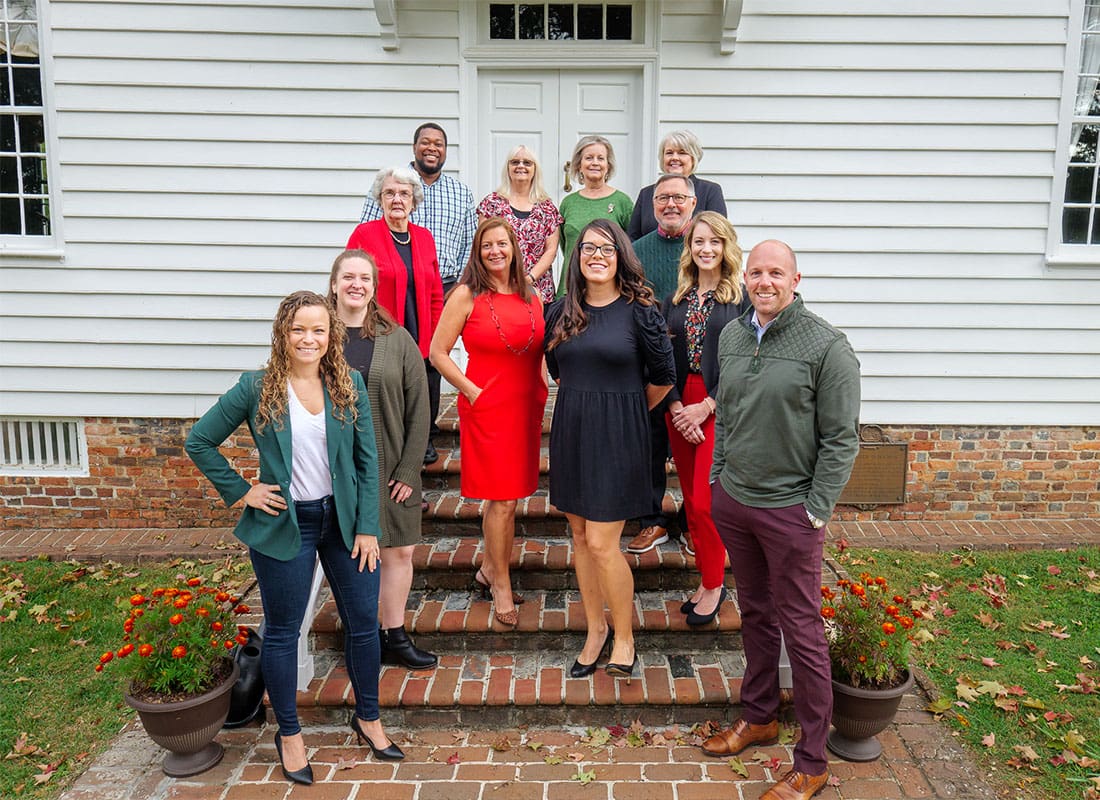For nearly a century, we at Brown Insurance have devoted ourselves to our clients.
Learn About Brown Insurance
The world has changed tremendously since Brown Insurance began almost 100 years ago, but that has not stopped our team from providing exemplary customer service to personal and business insurance clients.
As an independent agency, we have the flexibility to be there for our clients, while also tapping into the resources of the broader industry through our Keystone partnership. This allows us to best serve our clients, and keep their needs top of mind while keeping an eye on their costs.
At the core Brown Insurance derives joy from serving the local community in Blacksburg, VA, where our office has stood since 1995.



Over 90 Years of Service
We have been a staple independent agency in the New River Valley region since 1927. Brown Insurance is a multi-generational business, where our experience is only matched by our commitment to customer care.
The Independent Agency Advantage
What makes our independent insurance agency different?
We offer a wide variety of insurance solutions.
We are there for you in your time of need.
We are by your side every step of the way.
We are licensed insurance advisors.
“I can’t emphasize enough the value of that real person you can put on speed dial if you need them and get timely, accurate information and great insurance rate quotes. That’s Stephanie Blankenship at Brown Insurance: always going the extra mile for her clients!”
Mary W.
“I own a couple businesses here in Blacksburg and obtaining and switching our business liability and employees insurance was super simple. Jeff asked a lot of smart questions to help me make sure I was covered for all potential situations while still keeping me within my budget. I look forward to working with Brown Insurance on my personal policies as well.”
Cody T.
“Not only were we super satisfied with the reduction in our cost with Brown Insurance, we are now using our agent for our homes. I referred Stephanie to many of my friends with new drivers and they all switched! I could not say enough about her. She is patient, honest, thorough, and very responsive.”
Brenda M.
Our Clients Rave About Us
Check out our reviews and see why you should switch to Brown Insurance.
Comprehensive Insurance Solutions For Your Needs
Brown Insurance offers a variety of personal insurance and business insurance solutions to help you protect what matters most.

Raising a child can be a rewarding life experience, but it is also very expensive. It costs hundreds of thousands of dollars to raise a child to age 18, with college tuition, fees, room, and board resulting in another potentially enormous expense. If you were to die tomorrow, would funds be available to provide for food, clothing, day care, and educational expenses for your child?
Having life insurance could secure the future for your children if you have an untimely death. With a life insurance policy, there could be enough income to help pay for everything your child might need while growing up.
After your death, any outstanding debt and financial obligations do not disappear. Your home is probably the costliest and most significant property you own. A mortgage payment is a large burden for a spouse or partner to carry.
A life insurance policy would allow your spouse or children to pay off your outstanding debts and spare them the stress of making monthly payments on the home.
Many families lease or finance their automobiles these days. If the primary earner in the family were to die, the family could be left with outstanding car payments for years to come.
A life insurance policy would allow your spouse or children to pay off your outstanding debts and spare them the stress of making monthly payments on your car(s).
An average funeral can cost tens of thousands of dollars, and that's without unnecessary options or luxurious services. A death in the family is stressful enough; why add the hefty bill of a funeral to that stress?
A life insurance policy can easily cover the cost of a funeral. Your family will be able to think of you and have peace of mind without being burdened by funeral costs.
Once you retire, you will be living off social security, and if you are lucky to have them, a pension or retirement fund, too. But what if the surviving spouse has been relying on you to fund retirement for the couple? Premature death of an earner can affect sources of retirement benefits such as Social Security.
Life insurance can help support a surviving spouse during their retirement.
If you passed away, would your business suffer? There are many complications and financial issues that can arise due to the death of a business owner. Many people overlook this predicament.
A life insurance policy can keep a business moving along even during tough times, such as the loss of the business owner/partner. Key person life insurance is payable to the company and provides money for training and hiring of a new employee. A buy-sell agreement, funded by life insurance, allows the other partners in the business to buy the deceased’s share of the business, which will provide money for his or her family.
Many people mistakenly think that they don’t need life insurance if they don’t have children or if their children are grown. However, your financial responsibilities fall to your family when you are gone.
Life insurance can replace the income you would usually bring in and help support your spouse or adult children, ensuring your loved ones are able to maintain the lifestyle they're accustomed to.
Click it. Read it. Cover it.
- Click on the hotspots.
- Discover your risks.
- Explore coverage options.
Not what you’re looking for?
Explore more interactive graphics.
Manage Your Policies
Already a client of Brown Insurance? Visit our Service Center to make requests and manage your insurance.
An Independent Agency Gives You Options
We proudly represent Travelers, Progressive, and more!
Let’s Get Started
Contact Brown Insurance
"*" indicates required fields
Don’t like forms? Contact us at 540-552-5331 or email us.
